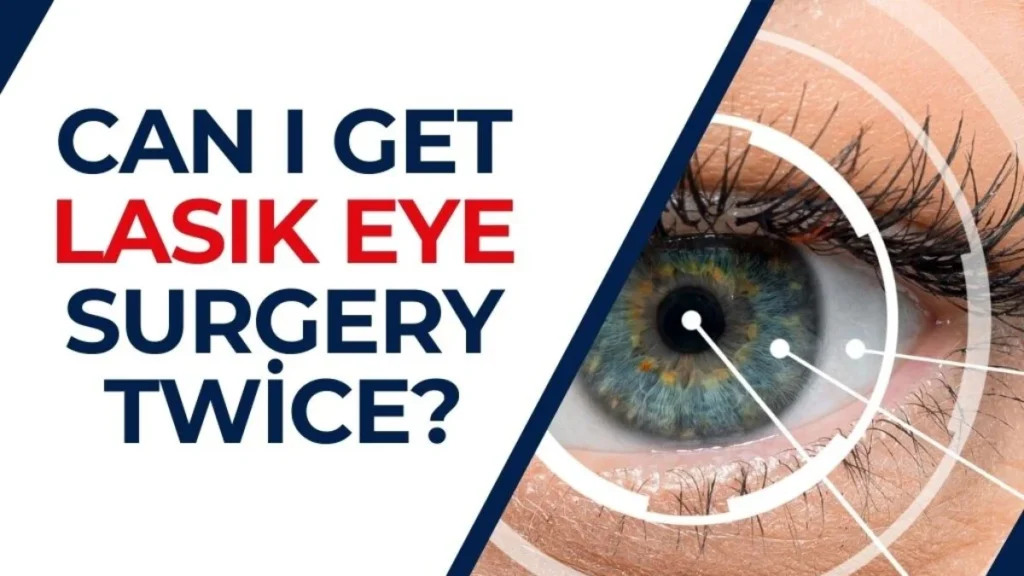Introduction
LASIK surgery has helped millions of people achieve clear vision—but in some cases, especially when vision changes over time or a small residual prescription remains, a second procedure, known as a LASIK enhancement, may be considered.
For medical patients with conditions like diabetes, autoimmune diseases, or chronic dry eyes, the question arises: Is it safe to undergo LASIK surgery twice? The answer depends on several key factors.
What Is a LASIK Enhancement?
A LASIK enhancement is a follow-up procedure to refine or correct vision after the initial surgery. It may be done to:
- Improve residual refractive error
- Address regression of vision over time
- Correct age-related changes such as presbyopia (in some cases)
Enhancements typically involve lifting the original corneal flap (if still viable) and applying additional laser correction.
Is a Second LASIK Surgery Safe for Medical Patients?
Yes—but only under specific conditions.
Medical patients must undergo a more comprehensive screening to ensure that a second procedure is both safe and beneficial.
Key Safety Factors for Enhancements in Medical Patients
1. Corneal Thickness
Each LASIK procedure removes a small portion of corneal tissue. If the cornea is too thin after the first surgery, enhancement may not be possible with LASIK. In such cases, alternatives like PRK (Photorefractive Keratectomy) may be recommended.
2. Corneal Health
Patients with systemic conditions that impact healing—like diabetes or autoimmune diseases—may experience delayed corneal recovery. Surgeons will assess:
- Healing response from the first LASIK
- Current corneal clarity and shape
- Risk of haze or scarring
3. Stability of Prescription
An enhancement is only advised if your prescription has been stable for at least 6–12 months. Ongoing fluctuations—especially due to blood sugar variability or medication side effects—can make outcomes unpredictable.
4. Dry Eye Condition
If the first LASIK induced or worsened dry eye, another surgery could exacerbate it. Medical patients with pre-existing or LASIK-induced dry eye require special evaluation and pre-treatment.
Alternatives to LASIK Enhancement
If LASIK retreatment isn’t advisable, other options may include:
- PRK enhancement: No flap needed; better for thin corneas
- SMILE (Small Incision Lenticule Extraction): Another laser-based option, if suitable
- Prescription lenses or contacts: If surgery poses too high a risk
- Refractive lens exchange (RLE): For older patients or those with lens-related vision changes
What the LASIK Enhancement Process Looks Like
1. Comprehensive Eye Exam
Includes corneal mapping, topography, and dry eye testing. For medical patients, systemic health factors are also reviewed.
2. Customized Enhancement Plan
If you’re cleared for retreatment, your surgeon will create a plan tailored to your condition and vision goals.
3. Shorter Recovery Time
Recovery from a second LASIK procedure is often faster—but monitoring is critical, especially in patients with medical conditions that affect healing.
Questions Medical Patients Should Ask Before a Second LASIK
- Has my corneal thickness changed since the first surgery?
- Will my medical condition affect healing this time?
- What are the risks of flap complications with a second LASIK?
- Could PRK be safer in my case?
- What long-term outcomes can I expect?
Conclusion
Medical patients can undergo LASIK surgery more than once—but only after careful evaluation of corneal health, vision stability, and systemic medical conditions. LASIK enhancements can be safe and effective when managed by an experienced ophthalmologist familiar with your medical history.




